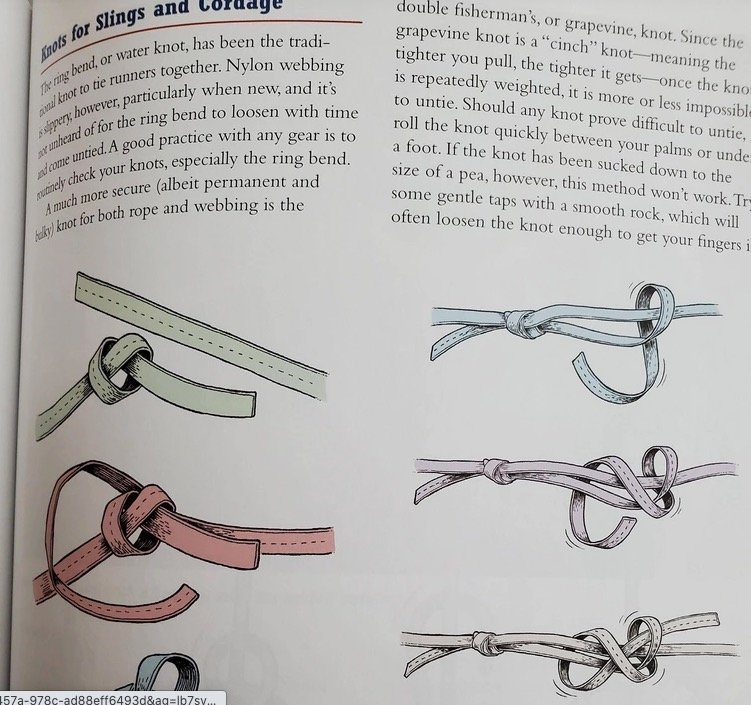Rethinking the water knot
The long time standard for many climbers to make a loop from tubular webbing has been the water knot. (Technically speaking it’s a bend rather than a knot, as it connects two webbing ends.) Basically a rewoven overhand, it’s fast to tie and easy to check. If you use it, tie it with long tails (at least a “fist" length) and snug it down.
However, the water knot has some problems.
A loosely tied water knot can come untied alarmingly easily if one part of it gets snagged in a rock nubbin, tree branch, or other similar protrusion. See a video on this here.
Testing has shown when this knot is repeatedly loaded and unloaded, the ends of the webbing can creep, and eventually come through the knot leading to failure. This could happen at a rappel station.
Here’s a sobering account of a tragic accident in the Tetons. A professional guide had a rappel tether made with tubular webbing tied with a water knot. The knot failed, and the climber died. Lesson from this: avoid using tied webbing for a rappel tether, use a sewn sling instead.
Here’s an interview with Austrian climbing safety expert Walter Siebert, who mentions dozens of deaths and serious accidents due to water knot failure.
What's a better option? The double fisherman’s, typically used to tie a loop in cord, also works great in webbing. Don't plan on getting this untied, especially if it's been loaded and unloaded, and gotten wet and then dried off. It may take a bit longer to tie, but the resulting increase in security is probably worth it. Perfect choice for a rappel station.
The tails can still creep in a double fisherman’s, so make them long, dress it tightly, and check often.
What about the beer knot? This is an interesting knot that works well in webbing, give it a Google if you like. I've played around with it a bit, but I am not a fan for a couple of reasons. One, if you need to do it in the field quickly it's pretty fiddly; I think I needed a chopstick or a coat hanger or something like that to push one end into the other. Second, you can't see the ends, so you never really know how much tail you made. On the plus side, it is clever, low profile and rather elegant. But, not my first choice.
There are a surprising number of folks who got pretty riled up at the suggestion of 1) the water knot might be dangerous, and 2) that a double fisherman’s is more secure. For anyone who says a double fisherman is not appropriate for webbing, I ask you: what's your information source for that? If you have a good source, let me know via the contact form and I’ll edit this article appropriately. Until then, I'm gonna go with the experts. Like, ya’ know, two guys who’ve written several books on anchors?
Still not sure about the water knot in webbing?
It’s recommended in the AMGA SPI (Single Pitch Instructor) manual, as well as “Climbing Anchors” (3rd edition) by John Long and Bob Gaines.
Quote: “A much more secure . . . knot for both rope and webbing is the double fisherman’s, or grapevine knot.”


